Travelling outside of Tokyo meant an early start for the COOK SNAP WIN 2018 crew. We left at 6 am to catch the Shinkansen that would take us to our destination—a wasabi farm located deep within the mountains of the Izu Peninsula. Most of the ‘wasabi’ available in Australia isn’t actually wasabi, but is made from horseradish, mustard and green food colouring. Getting to see the real thing was definitely worth the trek.

Although we were still a bit tired, the sight of beautiful wasabi fields within a luscious green forest, quickly refreshed all our senses. Aside from the hundreds of wasabi roots shooting out from the ground, we also saw shiitake mushrooms being grown and even found some wild berries. Luckily we didn’t eat them, because we later found out that they weren’t edible! Venturing deeper into the mountains, we were greeted with a stunning waterfall as a little treat at the end of our wasabi farm adventure.
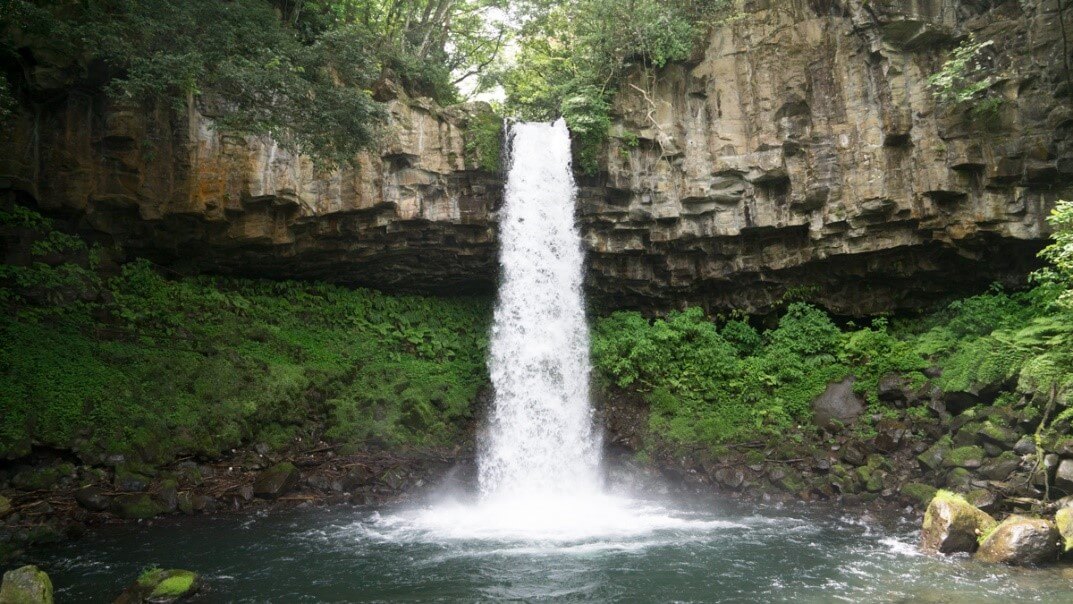
Having just seen the fresh wasabi growing in the farm, it was now time to see it in action. A local wasabi farmer taught us how to properly pickle wasabi in an intimate class, where we got to get some hands on experience in preparing wasabi as well. The stuff at the sushi shops will never quite taste the same as the real thing.
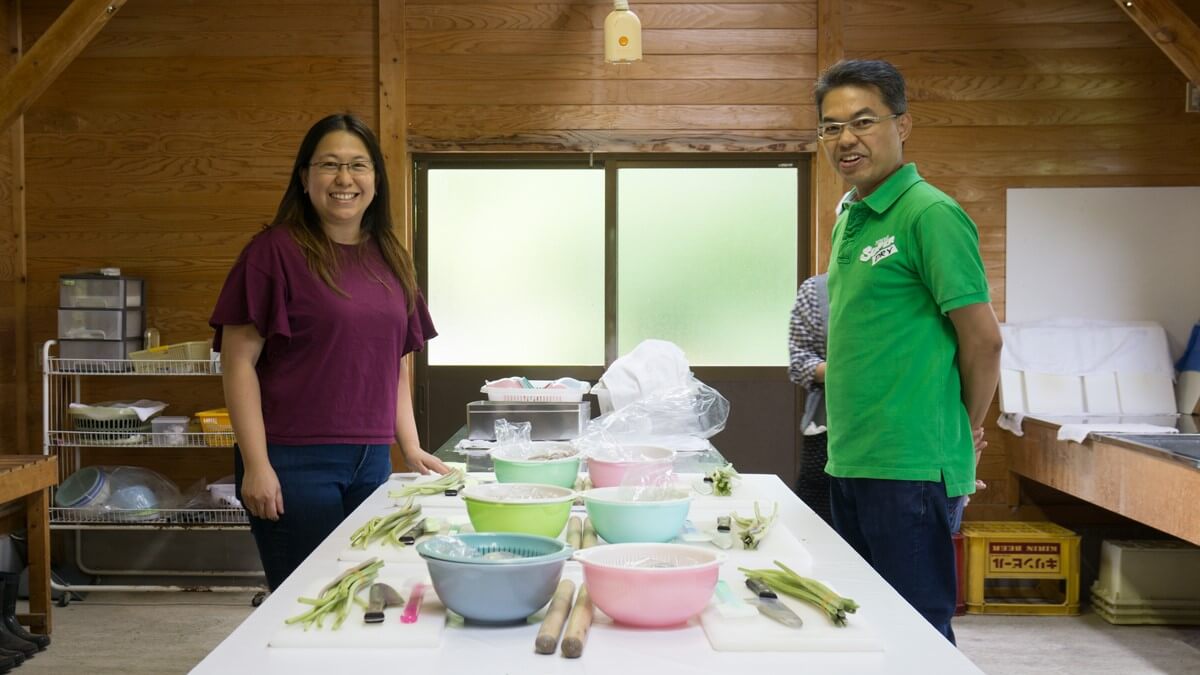
After wandering in the forest, it was now time for lunch. In a local restaurant, we dined tatami style again, and were served a delicious meal of handmade soba noodles cooked to order with a basket of crispy tempura. We definitely needed this hearty lunch before we got to work at our next destination.
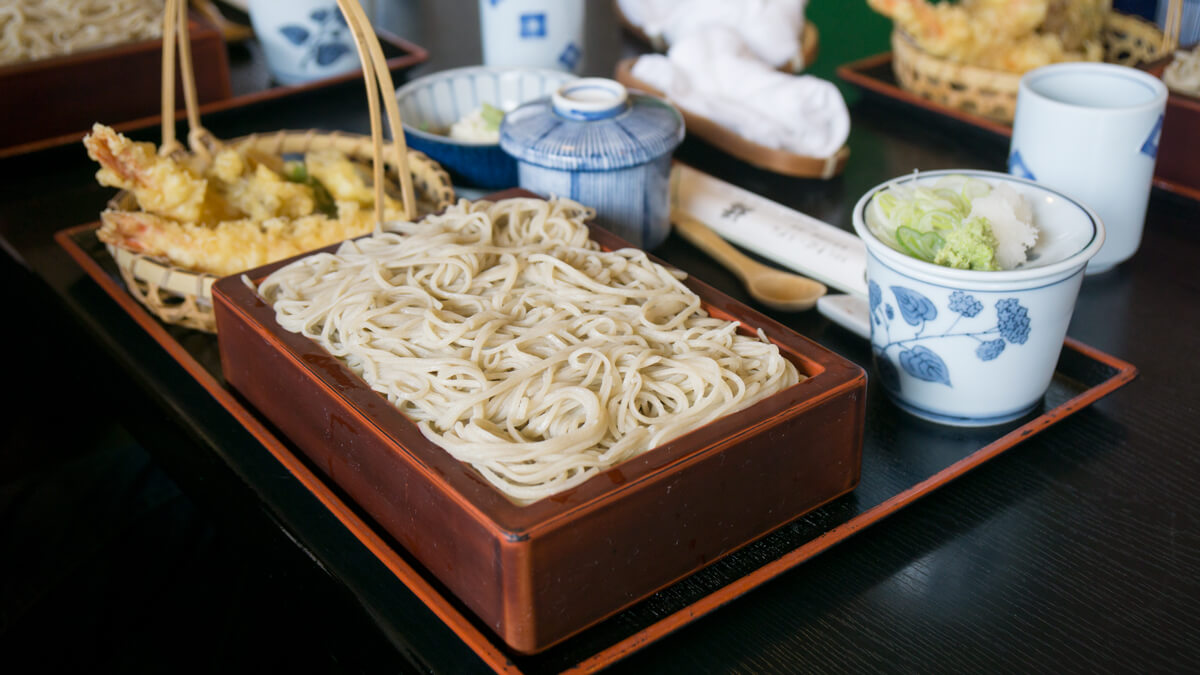
The tea farm was next in our list. Tea is one of the most popular and nutritious beverages consumed all around the world, usually we see the leaves dried up and prepared in a neat little tea bag. Learning more about where tea comes from, gave us more of an appreciation into the work that goes into preparing a hot cup of tea.
Before we learnt all about picking green tea leaves, we got to dress up in the traditional tea picking kimonos in order to make our experience as authentic as possible. In the field, our helpful tea leaf guru showed us what to look out for when plucking leaves, before sending us out to start picking our own tea leaves. Isshin Niyou is the youngest set of leaves on the stem and are the most sought after. For being used for the highest grade of green tea. After working hard, we were in need of some refreshments. Luckily, a 92-year-old brewing master was there to help us learn how to make the perfect cup of green tea.

It was then time to head back to Tokyo for our third culinary class of the day. Before we picked the freshest fish and made it a meal, we met up with our lovely cooking class instructor, Yukari, in Shibuya. The first leg of this guided tour was at Yukari’s favourite supermarket, where we learnt about Japanese ingredients and picking out the best produce to cook with. Right from tips on finding the freshest fish to learning all about the different types of Japanese green tea, this was the perfect class for us. Through our tour, we learnt on where Japanese food comes from, but in this cooking class, we got to learn about the best ingredients to cook a perfect Japanese meal.
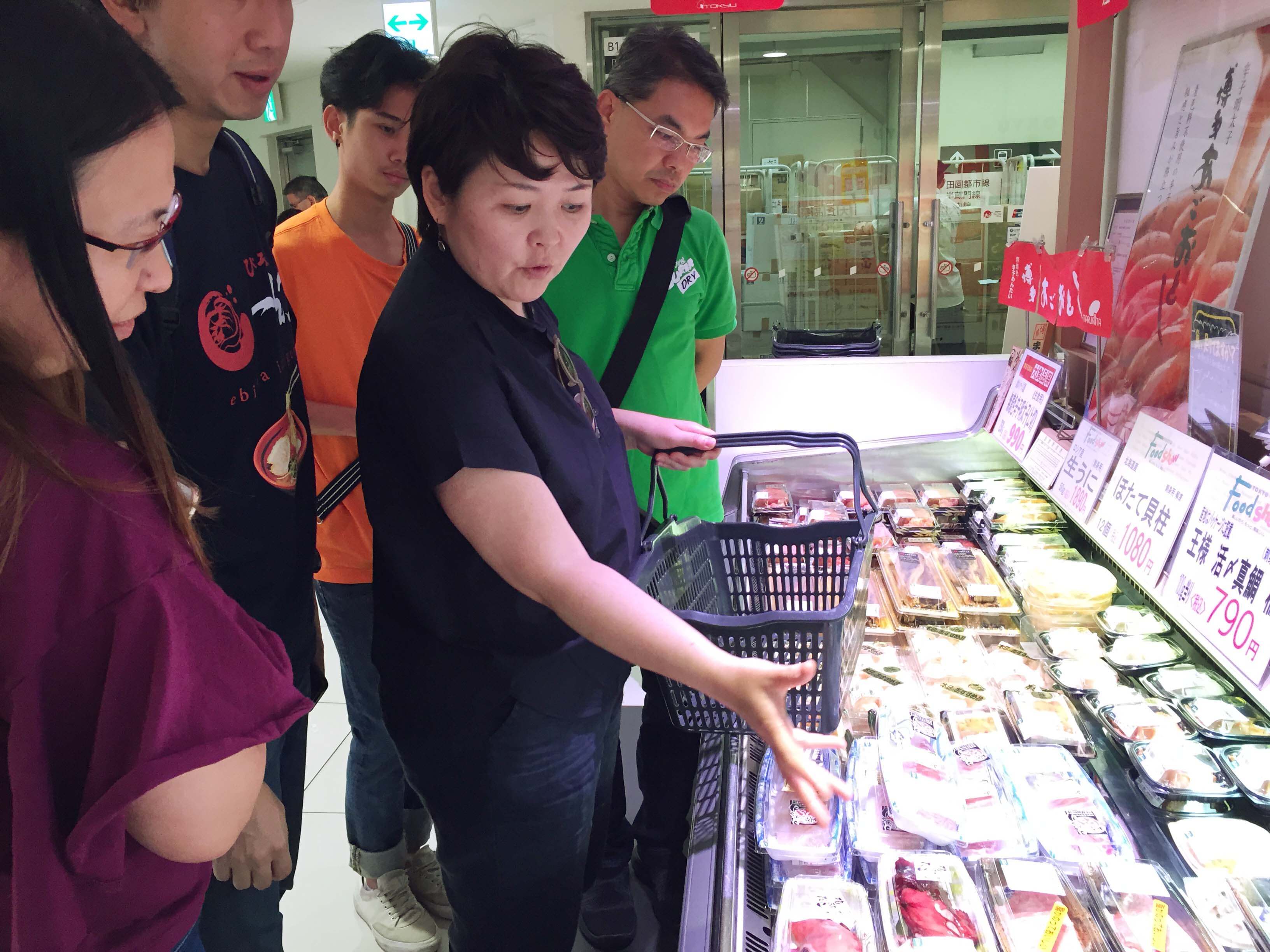
Using our newfound knowledge of Japanese cuisine, it was time to put our skills to test in the Tokyo Cooking Studio. Right from making ice cream to hand shaving bonito flakes, and from making Tamagoyaki to grating fresh wasabi, Yukari taught us everything we needed to know about traditional Japanese cooking. The best part? Getting to eat a delicious Japanese dinner we cooked ourselves. This experience was perfect for foodies like us, who appreciate Japanese food and want to learn more.
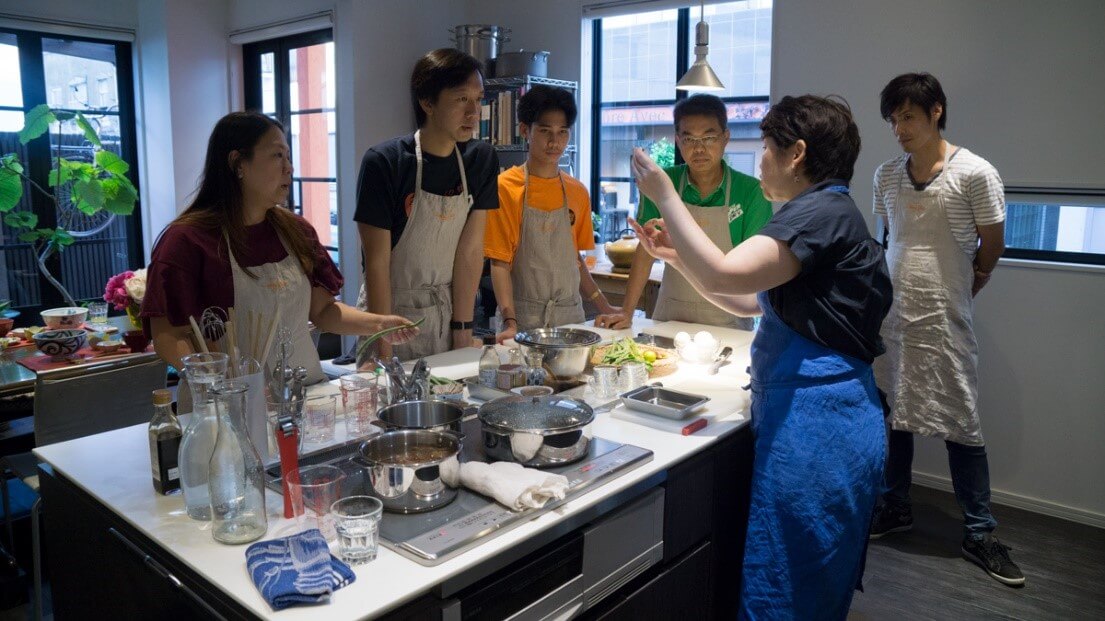
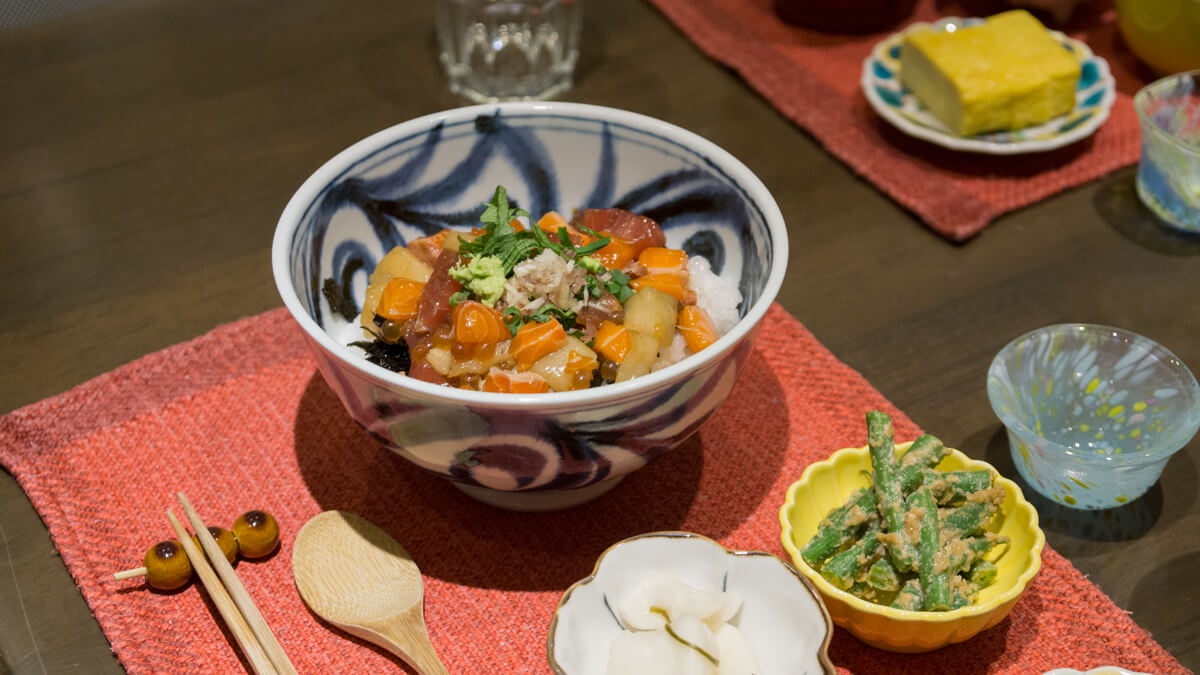
After dinner, it was time to head back to the hotel to get some rest before the final day of our COOK SNAP WIN 2018 cooking adventure in Tokyo.
Recipe Highlight:
Tempura Soba

Ingredients
- 1 carrot (cut into strips)
- 1 courgette (cut into strips)
- 60g broccoli florets
- 60g french beans
- 60g button mushrooms
- 115g sweet potato (diced)
- oil (for deep-frying)
- 225g Hakubaku Soba Noodles
- 1.2lt dashi broth
- 5 tbsp mirin
- 5 tbsp soy sauce
- 3 tbsp dried bonito flakes
- 1 egg yolk
- 450ml ice-cold water
- 180g plain flour
- pinch Bi-Carbonate of soda
Instructions
- To prepare dipping sauce, bring the mirin to the boil in a small saucepan and continue to boil until reduced by half. Stir in the soy sauce and bonito flakes and return to the boil. Immediately remove from heat and strain. Transfer the sauce into a serving bowl and set aside.
- Blanch carrots in boiling water for 1 min. Refresh under cold running water and drain well. Prepare the remaining vegetables.
- Stir the egg yolks and cold water together. Sift the flour and Bi-Carbonate of soda and add to egg yolk and water. Stir until smooth.
- Heat oil (in a wok or deep fat fryer) to about 180˚C. Coat the vegetables lightly in flour. Working in small batches, dip vegetables into batter and immediately deep- fry in the hot oil for about 1 min. Drain on kitchen paper and keep warm.
- Cook the noodles in the boiling dashi broth for 4 mins. Drain, reserving the broth.
- Pile the noodles into serving bowls and ladle in the broth. Top each bowl with a few deep-fried vegetables. Serve immediately, accompanied by the dipping sauce for the vegetables.

